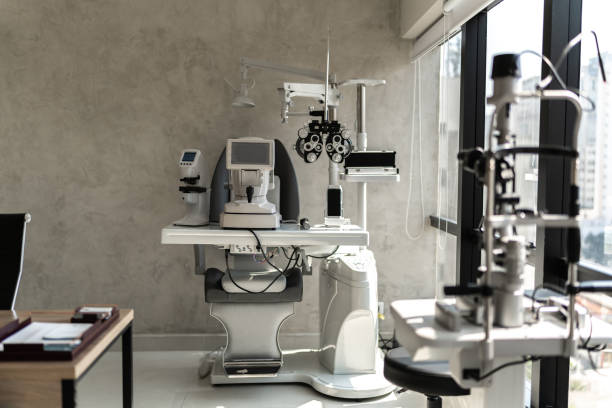A Comprehensive Guide to Eye Surgical Treatment Treatments Available at Your Optometrist's Technique
In the world of ophthalmology, the advancements in eye surgery treatments have opened up a world of possibilities for those looking for enhanced vision and eye health and wellness. From the extensively well-known LASIK eye surgical procedure to the much less acquainted Corneal Transplants, the selection of treatments readily available at your eye doctor's technique can address a variety of vision-related concerns.
LASIK Eye Surgical Procedure
When taking into consideration vision correction treatments, LASIK eye surgical procedure arises as a famous option for individuals looking for long-term improvement in their vision. LASIK, which represents Laser-Assisted in Situ Keratomileusis, is a prominent refractive surgical treatment that aims to correct common vision troubles such as nearsightedness, astigmatism, and farsightedness. This procedure involves making use of a laser to improve the cornea, allowing light to be properly concentrated onto the retina, leading to more clear vision without the requirement for glasses or contact lenses.
Among the crucial benefits of LASIK eye surgical procedure is its quick and relatively pain-free nature. The procedure itself normally takes only around 15 mins per eye, with many patients experiencing boosted vision nearly right away. Additionally, the recuperation time for LASIK is fairly brief, with lots of individuals able to go back to their regular tasks within a day or 2.

PRK (Photorefractive Keratectomy)
FIRST SENTENCE:
Another sophisticated vision improvement procedure similar to LASIK is PRK (Photorefractive Keratectomy), providing effective services for individuals seeking alternatives to conventional glasses or get in touch with lenses. PRK is an operation that improves the cornea utilizing an excimer laser to deal with refractive mistakes such as nearsightedness (nearsightedness), hyperopia (farsightedness), and astigmatism. Unlike LASIK, PRK does not entail developing a flap on the cornea; rather, the external layer of the cornea is delicately eliminated before the laser treatment. This makes PRK a suitable alternative for people with thin corneas or those involved in tasks where the threat of eye injury is higher.
The recuperation duration for PRK is much longer compared to LASIK, as the outer layer of the cornea requires time to regrow. Clients may experience discomfort and blurred vision throughout the initial healing phase, but vision progressively boosts over a number of weeks. Your eye medical professional will certainly offer in-depth post-operative care instructions to ensure a smooth healing procedure and optimal aesthetic end results.
Cataract Surgery
Cataract surgical procedure, a common procedure done by eye doctors, entails removing the cloudy lens within the eye and replacing it with a clear man-made lens dental implant to recover vision clarity. Cataracts occur when the natural lens of the eye ends up being gloomy, bring about blurred vision and difficulty seeing clearly. During cataract surgical treatment, the ophthalmologist makes a little cut in the eye and utilizes ultrasound innovation to separate the over cast lens, which is after that delicately sucked out. As soon as the cataract is gotten rid of, the you could try this out artificial lens, known as an intraocular lens (IOL), is inserted to change the all-natural lens's feature. This IOL aids to concentrate light onto the retina, enhancing vision. Cataract surgical treatment is normally executed on an outpatient basis and is recognized for its high success price in boosting vision and lifestyle for patients. It is vital to talk to your my sources eye medical professional to establish if cataract surgical procedure is the right alternative for you based upon your private eye health and wellness requirements.
Corneal Transplants
Corneal transplants, also referred to as corneal grafts, are surgical treatments that include replacing harmed or unhealthy corneal tissue with healthy and balanced contributor tissue to boost vision and minimize corneal conditions. This treatment is usually recommended for people with corneal scarring, thinning, or various other corneal conditions that can not be treated successfully with other techniques such as medicine or contact lenses.
Throughout a corneal transplant, the ophthalmologist eliminates the main part of the harmed cornea and changes it with a contributor cornea. This benefactor tissue is very carefully selected, evaluated, and saved to guarantee compatibility and minimize the risk of being rejected. Corneal transplants can recover vision, reduce pain or pain, and boost the appearance of the eye.
There are different kinds of corneal transplants, consisting of full-thickness transplants (penetrating keratoplasty) and partial-thickness transplants (such as endothelial keratoplasty or anterior lamellar keratoplasty), with the option relying on the specific condition being treated. After the surgical procedure, patients require close post-operative like keep an eye on recovery and prevent issues.
Retinal Detachment Surgical Procedure
Following successful corneal transplants, one more essential eye surgery procedure that may be required for specific people is retinal detachment surgical treatment, a fragile procedure aimed important site at restoring the retina's proper position to protect vision and protect against more difficulties (eye center of northwest florida). Retinal detachment occurs when the retina, the slim layer of cells at the back of the eye accountable for catching light and sending visual signals to the brain, retreats from its normal setting. This separation can bring about vision loss if not promptly resolved through surgical treatment
During retinal detachment surgical treatment, the ophthalmologist works to reattach the retina to the rear of the eye. There are different surgical strategies offered, including pneumatic retinopexy, scleral buckle, and vitrectomy, with the selection depending on the extent and details features of the detachment. The objective of the surgical treatment is to avoid vision loss and improve or restore vision when possible. After the treatment, people might require to adhere to a post-operative care plan to optimize recovery and visual outcomes. Early discovery and treatment of retinal detachment are crucial in protecting vision and avoiding permanent vision disability.
Conclusion

In the realm of ophthalmology, the advancements in eye surgical treatment treatments have actually opened up a world of opportunities for those looking for boosted vision and eye wellness. From the commonly known LASIK eye surgical treatment to the less acquainted Corneal Transplants, the array of treatments available at your eye physician's practice can attend to a variety of vision-related problems. It is important to seek advice from with your eye doctor to figure out if cataract surgery is the right choice for you based on your specific eye health needs.
Adhering to successful corneal transplants, one more essential eye surgery treatment that might be necessary for specific people is retinal detachment surgical procedure, a delicate operation intended at recovering the retina's proper position to protect vision and protect against further problems.In verdict, there are numerous eye surgery treatments offered at your eye physician's technique, consisting of LASIK, PRK, cataract surgical procedure, corneal transplants, and retinal detachment surgery.